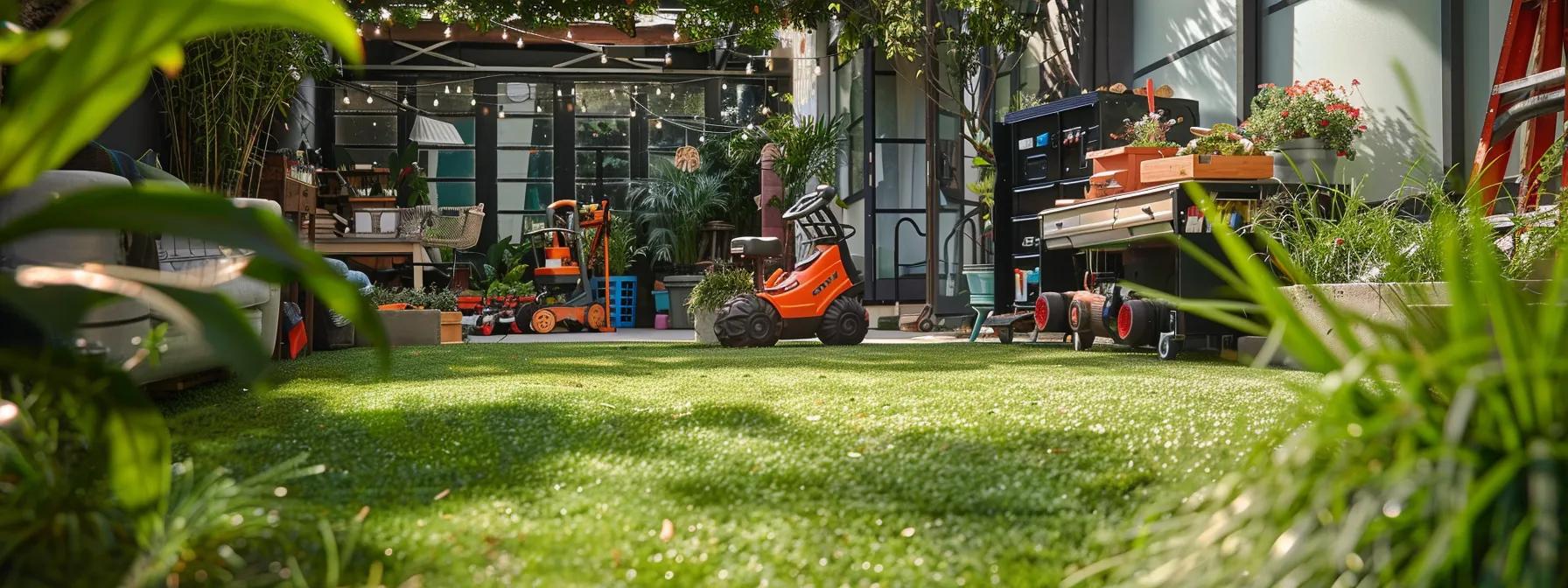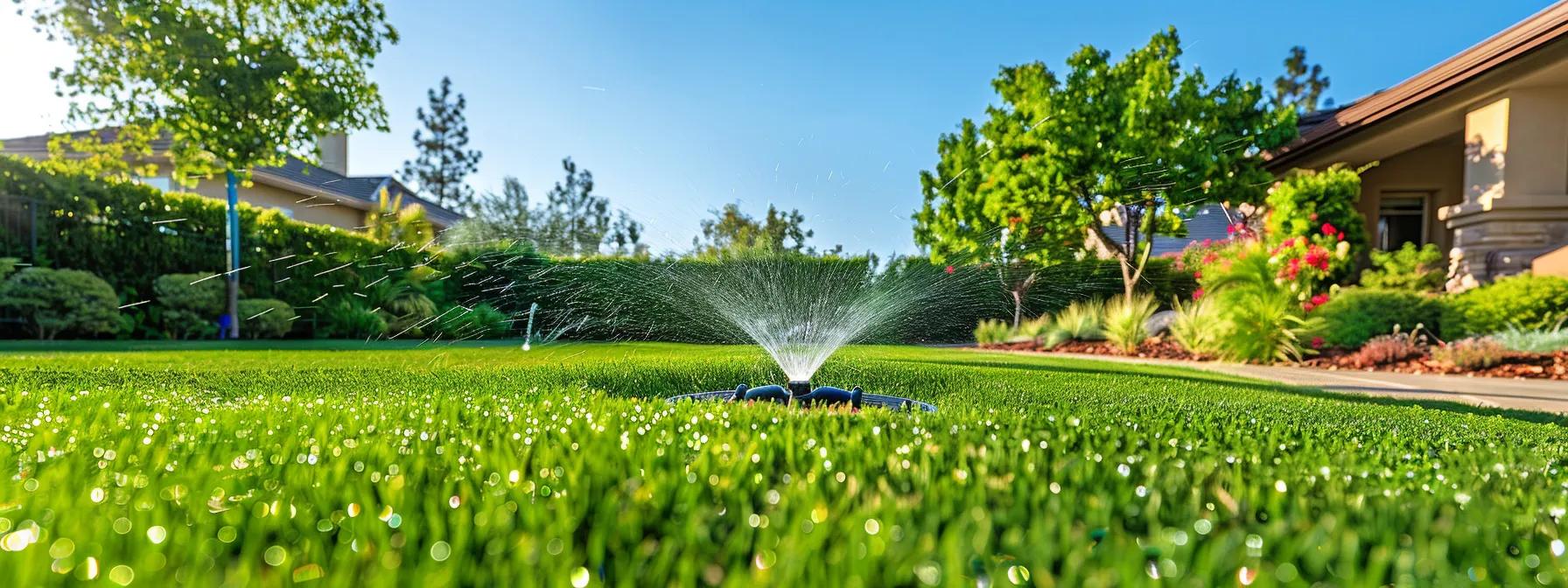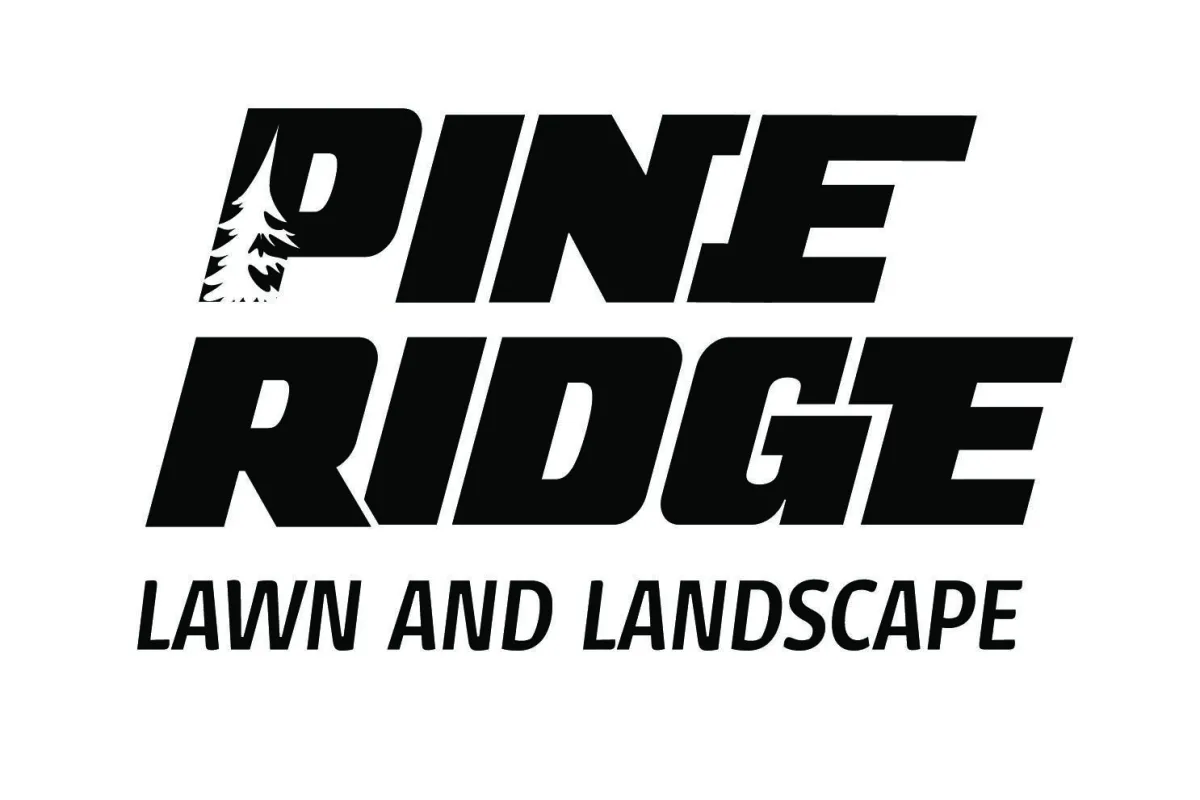Welcome to our Blog
The Pine Ridge Lawn & Landscape Blog

Seasonal Lawn Care Tips for a Vibrant Grass Landscape
Introduction:
Maintaining a bright, healthy lawn is more challenging than simply mowing and watering; consistent lawn care is essential. Homeowners and business managers, including those requiring commercial lawn services, face the task of managing seasonal changes, varying grass types, and local environmental conditions. This guide explains how to identify grass types, care for your lawn throughout the year (whether by incorporating landscape design services or planning for winter with commercial snow services) and implement customized maintenance for optimum results. With clear seasonal tasks for fertilization, watering, and weed control, Pine Ridge Lawn & Landscape demonstrates how professional expertise transforms lawns into vibrant outdoor spaces, often enhanced by hardscaping services. Let's explore these essential topics step by step.
How Do You Identify Your Grass Type for Effective Lawn Care?
Identifying your grass type is the first step to effective lawn care. Understanding your grass characteristics ensures you select the proper maintenance techniques and products.
What Are the Most Common Grass Types and Their Characteristics?
Different grasses fall into cool-season types (fescue, Kentucky bluegrass) and warm-season types (bermuda, zoysia), often selected by experts in landscape-design-services. Cool-season grasses display deep green tones and fine textures in mild weather, while warm-season grasses develop a coarser texture and lighter green color in hot climates, making them a popular choice for lawn care and hardscaping services integrations. Recognizing these differences helps in deciding appropriate mowing heights, fertilization, and watering practices that are essential for both household lawn care and commercial lawn services.
How Does Grass Type Influence Your Lawn Maintenance Schedule?
Depending on the grass type, mowing frequency, fertilization timing, and watering cycles vary. For instance, proper lawn care is essential to maintain an optimal turf health regimen. Cool-season grasses benefit from heavier feeding in early spring and fall, whereas warm-season grasses require summer feeding and less watering during high heat, often benefiting from the support of commercial lawn services. Adjusting these tasks prevents overwatering and nutrient overload, and expert landscape-design-services can help tailor the right schedule for each type.
Where Can You Find Local Grass Type Recommendations?
Local garden centers, extension services, and landscaping companies offer lawn care recommendations tailored to regional conditions. For example, Pine Ridge Lawn & Landscape uses local soil and climate data in Cambridge, MN, integrated with landscape-design-services and hardscaping services to optimize care strategies for dominant grass species.
What Are the Essential Seasonal Lawn Care Tasks for a Healthy Lawn?

Seasonal transitions require adjustments to maintain a healthy and attractive lawn.
What Should You Do During Spring Lawn Care?
In spring, aerate the soil to promote root growth and improve water absorption after winter, a crucial step in lawn care. Overseeding helps fill gaps from winter damage—a technique often recommended in landscape-design-services—while a balanced fertilizer boosts new growth. Early weed control is also essential as temperatures begin to rise, and for larger properties, commercial lawn services can offer expert support.
How Do You Maintain Your Lawn in Summer: Watering and Mowing Tips?
During summer, deep, infrequent watering not only encourages strong root systems while avoiding waterlogging, but is also an essential aspect of efficient lawn care. Mowing at a higher setting shades the roots, reducing evaporation—a practice often recommended by landscape-design-services experts. Automated sprinklers can help maintain consistent moisture during high temperatures, providing steady support similar to the benefits of commercial lawn services.
What Are the Best Fall Lawn Care Practices for Recovery and Preparation?
In fall, reduce mowing height gradually as part of effective lawn care and perform core aeration to relieve soil compaction. Overseeding repairs summer stress and a slow-release fertilizer supplies nutrients for winter storage and a vigorous spring regrowth, which is often recommended by landscape-design-services or even commercial lawn services for larger properties.
How Do You Fertilize Your Lawn for Optimal Growth?
Fertilization replenishes essential nutrients for robust lawn growth.
When Is the Best Time to Fertilize Different Grass Types?
Cool-season grasses thrive with fertilization in early spring and fall, often recommended by lawn care experts to ensure vibrant color and growth. Meanwhile, warm-season grasses benefit most when fed in late spring and early summer, making it a key focus for landscape-design-services specialists. Proper timing not only ensures maximum nutrient uptake but also supports commercial lawn services for efficient upkeep with minimal waste.
What Are NPK Ratios and How Do They Affect Lawn Health?
Fertilizers are measured by their NPK ratios—nitrogen encourages greening and leaf growth, phosphorus strengthens roots, and potassium aids overall plant health and drought tolerance. For effective lawn care and landscape-design-services, using the right balance improves color and resilience. Additionally, integrating hardscaping services can enhance the overall outdoor aesthetic and functionality.
Should You Choose Organic or Synthetic Fertilizers?
Organic fertilizers offer slow-release nutrients and promote soil health, whereas synthetic options provide immediate nutrient availability. The choice depends on whether long-term soil improvement or rapid results are desired.
How Do You Apply Fertilizer Correctly to Avoid Lawn Damage?
Use a broadcast spreader for even distribution, follow product instructions carefully, and water after application to help nutrients reach the roots safely.
What Are the Best Watering Practices to Keep Your Lawn Lush and Green?

Watering plays a critical role in sustaining lawn health.
How Often Should You Water Your Lawn in Different Seasons?
Adjust watering frequency with the season. In summer, aim for about 1 inch of water per week, whether through rainfall or supplemental irrigation. In cooler months, reduce watering to prevent over-saturation.
What Are the Benefits of Using Sprinkler Systems for Lawn Watering?
Sprinkler systems offer uniform water distribution and improved water conservation. Automated systems also allow for precise scheduling based on weather conditions, saving water and reducing costs.
How Do You Adjust Watering for Different Grass Types and Climates?
Warm-season grasses typically require deep, infrequent watering, while cool-season grasses need more consistent moisture. Local climate data and soil tests can help refine water schedules according to regional needs.
What Are the Best Mowing Practices for a Healthy Lawn Year-Round?

Regular mowing is essential for appearance and grass health.
How High Should You Mow Different Grass Types?
Cool-season grasses thrive when mowed at 2.5 to 3.5 inches, while warm-season grasses do best at 1 to 2 inches. The correct height allows for proper photosynthesis and reduces stress.
How Often Should You Mow Your Lawn in Each Season?
Mowing frequency depends on growth rates; in warmer months, mowing might be needed weekly or bi-weekly, while cooler weather slows growth and reduces the need.
Why Is Sharpening Mower Blades Important and How Do You Do It?
Sharp blades create clean cuts that reduce stress and disease risk. Checking and sharpening blades during peak growing seasons ensures a neat cut and promotes faster recovery.
Why Are Aeration and Overseeding Important for Lawn Health?
Aeration and overseeding help rejuvenate lawns by relieving soil compaction and promoting fresh growth.
What Is Lawn Aeration and When Should You Do It?
Aeration involves perforating the soil, typically done in fall for cool-season grasses and in late spring for warm-season types, allowing improved air, water, and nutrient penetration.
How Do You Overseed Your Lawn for Thicker Grass?
Overseeding introduces new grass seed into an existing lawn, which improves density and fills bare spots. This process is most effective when combined with aeration, ensuring good seed-to-soil contact.
How Do Aeration and Overseeding Improve Lawn Resilience?
Together, these practices reduce soil compaction, support robust root development, and enhance the lawn’s capacity to withstand drought, pests, and diseases.
How Do You Troubleshoot Common Lawn Problems Like Pests and Diseases?

Early detection of pests and diseases minimizes damage to your lawn.
What Are the Signs of Lawn Pests and How Do You Treat Them?
Look for irregular patches, visible insects, or damaged grass blades. Treatments can include targeted chemical applications, remedies like neem oil, or professional pest control while preserving beneficial insects.
How Can You Identify and Manage Lawn Diseases?
Diseases often appear as discolored or mushy patches. Proper watering, balanced fertilization, and timely fungicide use help prevent widespread damage. Regular inspections are key to early management.
What Causes Brown Spots and Thinning Grass, and How Do You Fix Them?
Issues such as poor drainage, pest infestation, or nutrient imbalances can lead to brown spots and thinning grass. Improving drainage, adjusting watering, and revising fertilizer application can restore lawn health.
How Can You Customize Your Lawn Care Plan Based on Local Climate and Soil?
A tailored lawn care plan accounts for local climate and soil conditions to ensure long-term lawn health.
Why Is Soil Testing Crucial for Lawn Health?
Soil tests determine pH levels, nutrient content, and organic matter, allowing for specific amendments to optimize nutrient uptake and root health.
How Do Local Climate Conditions Affect Lawn Maintenance?
Temperature fluctuations, rainfall patterns, and seasonal extremes dictate watering, mowing, and feeding routines. For instance, lawns in Central Minnesota require carefully timed practices to cope with harsh winters and warm summers.
What Are Eco-Friendly Lawn Care Practices for Sustainable Maintenance?
Using organic fertilizers, efficient irrigation systems, and natural pest control methods not only supports lawn health but also reduces chemical use, promotes biodiversity, and strengthens soil structure.
Frequently Asked Questions
Q: How often should I water my lawn during summer? A: Lawns typically need about 1 inch of water per week during summer, with adjustments based on rainfall and humidity.
Q: When is the optimal time for lawn aeration? A: Aeration is best in early fall for cool-season grasses and in late spring for warm-season grasses to enhance nutrient and water absorption.
Q: Can overseeding improve my lawn’s thickness? A: Yes, overseeding fills bare patches and increases grass density, resulting in a thicker, more resilient lawn.
Q: What factor is most critical in choosing the right fertilizer? A: The NPK ratio is vital as it affects leaf growth, root development, and overall plant health based on your lawn’s needs.
Q: How do I identify common lawn weeds before they spread? A: Regular inspection for irregular growth patterns, discolored patches, or distinctive leaf shapes helps in early detection of weeds like dandelions, crabgrass, or clover.
Final Thoughts
A lush, vibrant lawn is the result of understanding grass types, adjusting care routines with the seasons, and following proper techniques for fertilization, watering, and mowing. Aeration and overseeding further enhance soil structure and density. With regular monitoring and targeted pest and weed control, property owners can enjoy a beautiful, resilient landscape throughout the year. These practices not only improve curb appeal but also ensure the longevity and vitality of every green blade.
Get a Free Estimate

Service Area:
Cambridge, Isanti, St. Francis, East Bethel, Zimmerman, Bethel, Oak Grove, Nowthen, Elk River, Anoka, Coon Rapids, Blaine, Ham Lake, Forest Lake, Brooklyn Park, Andover, Mounds View, Champlin, Maple Grove, and more!
Working Hours
Mon: 7am - 5pm
Tues: 7am - 5pm
Wed: 7am - 5pm
Thur: 7am - 5pm
Fri: 7am - 5pm
Sat: Closed
Sun: Closed



